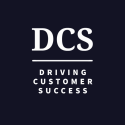Customer Success – What Does It Mean?
The vitamin C for corporate growth is called “Customer Success”

Whether it’s software, toothpaste, or the latest Netflix series – consumers today have more options at their disposal than ever before.
This development is putting companies under increasing pressure. Because of such diversity, products and services are becoming increasingly interchangeable. High quality and low prices are often no longer enough to stand out from the competition. To avoid being lost in the crowd, it is more important than ever for companies to retain customers over the long term. Numerous approaches already exist for this purpose, which is summarized under the keyword Customer Experience (CX). One area of CX is Customer Success.
In contrast to numerous short-lived buzzwords from the B2B sector, Customer Success has become one of the most important factors for company growth in just a few years. In the following article, we explain why this is so and what exactly is behind the buzzword.
What is customer success?
The basic idea of Customer Success is quite simple: The product or service should not only make the customer satisfied but demonstrably more successful. Companies actively support the customer in making the most of their offering in order to achieve individually agreed goals.
First and foremost, Customer Success concerns business models that generate recurring revenues. The customer pays for a subscription at regular intervals – as in the case of software licenses, for example. This is why the term is particularly widespread in the SaaS industry.
If you want to maintain customer relationships over the long term, you must never rest on your laurels. After all, once the contract is signed, the real work begins: the customer must be “conquered” again and again, i.e., convinced of the benefits of the product or service.
Why is Customer Success becoming increasingly important for business growth?
That customer satisfaction plays an important role for companies is nothing new in itself. What is new is that consumers today have more choices than ever before. Added to this is the amount of information available that influences purchasing decisions, such as online reviews. Accordingly, demands are becoming ever higher: “Digital customers” expect the most convenient and smoothest possible processes at every step of the customer journey.
This change has triggered a major shift in power: It is becoming increasingly easy for customers to turn their backs on a company. In many industries, companies can no longer protect themselves with annual contracts. In addition, the cost of acquiring customers has risen steadily over the past decade. As a result, companies are now putting much more effort into retaining existing customers.
What role does a Customer Success Manager play?
Successful Customer Success Management generally only succeeds if the entire company organization is geared to customer success. It is against this background that the relatively new job description of Customer Success Manager (CSM) has emerged. CSMs ensure that customers derive the greatest possible benefit from the product or service in question.
Examples of the tasks of a CSM are:
- Define individual success criteria together with the customer and set a time frame
- Regularly review success against agreed criteria
- Collect and evaluate feedback and usage data to address each customer’s issues
- Organize training activities, for example in the form of webinars
- Create training materials
CSMs are therefore the link between the customer and the company. They are in constant contact with customers and ensure that their feedback is actually implemented.
What distinguishes Customer Success from Customer Support?
Although there is some overlap, Customer Success is not merely a fashionable synonym for customer support.
Customers turn to support when they already have a reason to complain. Typically, the support staff is confronted with problems that always stem from the same causes. They cannot completely eliminate the causes, but only solve the individual problems. This approach is reactive.
Probably the biggest difference between Customer Support and Customer Success is that CSMs are proactive. Based on usage data, they recognize early on when a customer might become dissatisfied in the future. This allows them to intervene in time and solve the problem before a complaint even arises.
The right Customer Success Strategy – Where do you start?
The following questions serve as the basis of any strategy for Customer Success:
- What does my customer need to be successful and achieve his goals?
- How can I support him and create conditions for his success?
It is important to remember that once goals have been set, they are by no means set in stone. Your customers – just like you – have to adapt to constantly changing market conditions. Continuous data analysis is necessary in order to change processes in time according to new customer requirements.
Here we present tips and suggestions for different phases of customer contact that you can use to build and maintain customer relationships:
Before the first customer contact: Information as the basis for success
Companies like Hubspot have proven that initial customer-success activities sometimes take place before the first customer contact. They provide prospects with free resources in the form of e-books, online courses, checklists, and case studies. In this way, they establish themselves as a valuable source of information and indirectly help their readers to succeed.
The Discovery Call: Find out where the shoe pinches
Content is often the first point of contact with your company. If a potential customer shows interest, your next step should be to contact them by phone call or e-mail.
A discovery call, i.e., an informational interview, is the first opportunity to learn more about the specific use case. Therefore, you should prepare thoroughly for the conversation and allow as much time as possible for questions about the prospect, their company, goals, and expectations. Depending on the industry, this step may not always be necessary. Nevertheless, it is useful to get in touch with the potential customer in person.
The demonstration: concrete solutions to problems of the lead
When demonstrating your product or service, it is necessary to tailor the presentation to the lead-in question. Use the information from the discovery call to target the prospect’s concerns and offer solutions. The biggest mistake would be to deliver a standardized presentation.
The implementation: Agree on actionable goals
In this phase, you work with the potential customer to establish specific metrics against which success will be measured and develop a strategy for implementing the goals.
The introduction: Get new customers on board safely
Congratulations, you’ve won a new customer! But now it’s down to the nitty-gritty: It’s up to you to provide the customer with all the tools they need for successful use, for example by giving them access to training materials and a contact person to oversee their project.
After the implementation phase, you should always seek feedback. Did everything go well? Where did difficulties arise? Find out as early as possible so that you can initiate countermeasures in good time.
The success control: Set up an early warning system
Regularly review the success of agreed solutions.
To determine which customers need your attention, you should introduce a so-called Customer Health Score. This is a method of classifying customers according to their success status. The Customer Health Score serves as an early warning system, indicating which customers will soon be on “red alert” and which are in the “green zone”.
Software solutions for Customer Success help to keep an eye on the status of the entire customer base. For example, through automatic notifications in the event of a deterioration in certain key figures or reminders of the next performance review.
The feedback loop: customer feedback in the right place
In one ear, out the other: collecting feedback is not much use if it is not implemented. Standardized feedback loops are one way to make the most of feedback.
A simple feedback loop can look like this:
1. Customer Experience
A new customer makes first experiences with your solution.
2. Obtain feedback
- Use the Net Promoter Score as a measure of customer satisfaction. Ask the customer how likely they are to recommend your brand or offering to others.
- Ask for the reason for the rating.
3. Listen, learn, find solutions
In the case of a negative or neutral review, arrange a meeting to learn more about the problem and offer solutions.
4. Share insights
- Schedule short daily meetings with your team to analyze and prioritize the feedback collected.
- Share the lessons learned with relevant staff.
5. Implement feedback
- Put the resolution of common customer issues on your agenda for future product or process development.
- Integrate customer feedback into your workflows.
6. Continue observation of customers and repeat loops
Conclusion on Customer Success
Customers today have more choices than ever before and with it high expectations. At the same time, the cost of customer acquisition has risen. So to remain competitive in the long term, companies must strive to make existing customers not only satisfied but also successful.
Successful customers remain loyal, because the more successful the usage, the riskier it is to switch to a competitor’s offering. That’s why it pays to integrate Customer Success as a strategy into corporate planning.
– Tatjana Galinker

Hakan Ozturk
Founder, theCScafe.com, #1 Weekly Customer Success Newsletter
Hakan Ozturk is a Paris-based Customer Success leader with over 15 years of experience in the computer software industry. Passionate about driving growth and delivering value to strategic customers, Hakan has established himself as a trusted industry expert. As the Founder of The Customer Success Café Newsletter and TopCSjobs.com, Hakan provides valuable industry insights and daily-updated job opportunities worldwide in the field of Customer Success. Connect with Hakan to boost your career in CS and your company’s potential for massive growth.

Leave a Reply